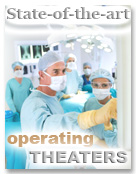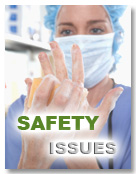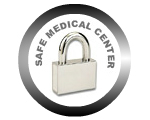
- RP Specialized in:
- Plastic Surgery in Argentina
- Treatments
- Breast Implant Surgery
- Rhinoplasty
- Vaser® Lipo System
- Liposuction
- Eyelid Surgery
- Tummy Tuck
- Breast Lift
- Facelift
- Lifting the Tip of the Nose
- Breast Reduction
- Double Chin Surgery
- Eye Shaping Surgery
- Chin Augmentation
- Ear Surgery
- Mentoplasty
- Eyebrow Lift
- Mini Facelift
- Cantopexy
- Deep Chemical Peel - Resurfacing
- Plastic Surgery Information
- Plastic Surgery Costs
- Cosmetic Procedures
- Hair Transplant
- Dermatology
- Phlebology
- Related information
- Related Links
- Web Directories
- Free Quotation
- Webmaster
» Eyelid Surgery or Blepharoplasty in Argentina
Table of Contents:
- » Pictures Before and After
- » General Information: risks, anesthesia, recovery, pre-operative tests, etc.
- » How to get a quote - Photographs necessary - Requirements.
» In Plastic Surgery, Experience Counts...
» General Information: risks, anesthesia, recovery, pre-operative tests:
What is the surgical procedure like and what is it for?
Aging causes an accumulation of excess skin on the upper eyelid that descends over the eyelashes and may, in the most severe cases, interfere with your vision. Some protuberances known as palpebral bags ("baggy eyelids") may also appear on the lower eyelid, which is simply fat that is misplaced when the supporting tissue becomes slack. Sometimes, a pigmented deep crease can be seen under these bags, known as "black circles under the eyes." These features make you look older and more tired than you really feel. You should bear in mind that Blepharoplasty itself does not correct the pigmentation of the dark circles under your eyes. The purpose of this surgery is to remove the palpebral bags that make your eyes look puffy as well as excess skin from the upper eyelids. However, in some cases, round circles under the eyes may also be treated with special whitening moisturizers or by filling the creases with biopolymer injectable fillers.
Eyelid Surgery, Blephraoplasty or Eyelid Rejuvenation is a usual procedure that lasts from 60 to 90 minutes. It consists in the removal of excess skin from the upper eyelid and fat from the lower eyelid (sometimes these pockets of excess fat are relocated) and in the refill of creases in the "dark circles under the eyes" if necessary. In some cases, these dark circles can be treated with whitening moisturizers to enhance their appearance.
Depending on the case, this surgery will be performed on the upper eyelids, on the lower eyelids or both, if necessary. The procedure performed on all four eyelids is known as Complete Blepharoplasty and can also be done in conjunction with other facial surgical procedures, such as Facelift, Mini Facelift, etc.
Are there any risks? Which complications may arise?
All surgeries involve Risks:
By giving you all the information you need to make a decision, including information on the risks involved, we show our respect for you and allow you to have the last say in all matters concerning your surgery. We also believe that this speaks volumes about RP Medical Center, about who we are and how we work. It is our responsibility to provide you with all necessary information. We consider that Quality goes hand-in-hand with Responsibility. All patients have a right to be explained how the surgical procedure will be performed, together with the potential risks and complications (which are not caused by a Physician’s errors or malpractice, but which derive from the surgery itself or cannot be anticipated), and the advantages and disadvantages of certain techniques, so that they can think it over and make a balance before making any final decision.
Any surgical procedure has risks (whether an optional surgery, which you choose to undergo, or an emergency surgery); some risks are common to all surgical procedures and others are specific to each type of surgery. No surgery is exempt from risk. A plastic surgery is, after all, a surgery. Risks (each under different incidence percentages; see below) range from post-surgery complications which can be secondarily solved (bad scarring, seroma, skin necrosis, etc.) to severe and fatal complications such as reactions to anesthesia, pulmonary embolism (blood clots or "small blood balls" which could migrate to the heart and block the pulmonary artery causing severe injuries or even death), among others.
In 1997, the results of a survey were disclosed in the United States, based on 400,675 surgical procedures involving Plastic Surgery and Surgical Repair, where 7 deaths were found. The rate of severe complications (hypotension, hematoma, infection, hypertension episodes, sepsis) was 0.47% (1 case every 230 patients). One death occurred every 57,000 patients, that is, a mortality rate of 0.0017%; slightly less than 1 death every 57,000 patients. The survey documented the approximate safety level for plastic surgeries conducted by certified plastic surgeons in authorized facilities in the US, during those years. Another survey conducted in the United States (from 1994 through 1998) further accounted for deaths occurred after Liposuctions. Survey findings reported one death every 5,000 patients, which represents a mortality rate of 0.02 % and 20 deaths every 100,000 liposuctions. The main cause of death was pulmonary thromboembolism.
Risks must be minimized by taking all appropriate preventive measures and complying with certain rules and requirements, including the requirement for pre-surgery tests, pre-operative and post-operative indications, the practice of surgeries in the proper facilities (which must be fully-equipped to cope with any inconveniences), patients’ full medical history, and their compliance with the Physicians’ guidelines after the surgery. It should be recalled that complications and risks may arise even where all precautions were taken and even if the patient is healthy. Given that these complications are not predictable, they may affect the patients of even the best surgeons in any country of the world, despite any precautions taken to reduce potential risks.
What kind of anesthesia do we use?
Surgery is performed under local anesthesia combined with sedation. During the procedure, the patient will be awake but relaxed and insensitive to pain.
Are there any scars left?
The incisions follow the natural line of your eyelids: they are made in the creases of your upper lids, and just below the lashes on the lower lids. The incisions become almost imperceptible about one month after the surgical procedure. They are sutured with very fine stitches, thus leaving a nearly invisible thin line.
What results are expected and how long do they last?
Both your eyes and your whole face will be refreshed. You will get a more alert and youthful look that will last for years. For many people, these results are permanent. Please remember that blepharoplasty does not eliminate the creases or the dark circles under the eyes. Depending on the case, these can be improved by injecting fillers into the creases or by applying whitening moisturizers. Eyelid surgery will not remove "crow’s feet" or lift sagging eyebrows.
What precautions should I take after surgery? When can I go back to normal life?
After care
You should take plenty of rest in a half-sitting position during the fist 48 hours following surgery. No bandages will be applied. Immediately after surgery, small sterile pads will be applied. You will experience swelling and bruising around the eyes that will last from 5 to 12 days, depending on the patient. You will be instructed to apply cold compresses to reduce swelling and to use an antibiotic cream. Stitches will be removed on the 5th day. During the first 3 to 5 days, you will not be able to see well (blurred vision) or to read or watch TV. It is normal to feel uncomfortable and not to be able to close your eyes properly. When you go out, you should wear sunglasses and a special eye sunblock for several weeks. You will not be able to wear contact lenses for about two weeks. Avoid strenuous activities that increase your blood pressure, including bending, lifting weights, and rigorous sports for at least three weeks. Most people feel ready to go back to work within a week or ten days after surgery.
If I do not live in the City of Buenos Aires: How long should I stay approximately?
You will need to stay in Buenos Aires for 8 nights and 9 days, as long as you recover normally during the post-operative period.
Which are the required pre-surgical tests?
It is necessary to undergo the following pre-surgical tests within 1 month before the date of surgery:
- I. Blood test: hemogram, blood sugar, creatinin, hepatogram, clotting time, serology HIV.
- II. Cardiology: ECG and surgical risk.
Mandatory pre-surgical instructions:
- Put off smoking 1 month in advance (all smoking patients have an increased risk of skin suffering in the area being operated on and of a delayed healing of scars).
- Discontinue Aspirin intake (Acetyl salicylic acid) 1 month in advance.
- Discontinue Vitamin E intake 1 month in advance.
- Apply anti tetanus vaccine.
- Anticoagulated Patients: Consult your hematologist to change treatment schedule.
» How to get a quote - Photographs necessary to undergo a surgery - Stay - Requirements:
» To request the right quote and provide all necessary information, go to: "How to travel to undergo a surgery", and read "Step No. 1", "Make arrangements for a surgery by following these easy steps".
» Photographs required for Blefaroplasty: Please send 1 frontal photograph and 1 profile photograph of each side. The photograph must show the area from your nose up. Please avoid photographing your mouth and neck to better show the eye area.
» Days of stay for Eyelid Surgery: 8 nights, 9 days. For further information on stay days, minimum stay, and schedule, among other matters, go to "How to travel to undergo a surgery" , read "Step No. 3", " Make arrangements for a surgery by following these easy steps."
» Hospitalization: Not required. After the surgery, a 4-hour recovery period at the clinic is required. You may then move to your place of accommodation.
» Why are photographs necessary?
Not only are photographs necessary to avoid paying for an unnecessary and more expensive surgical procedure, but also to determine whether the surgery for which you have come to us is the best type of surgery for you. Photographs are essential for our Physicians to analyze your case, to know how to proceed and offer you the personalized treatment that sets us apart. Your photographs also enable us to make a more precise quote.









